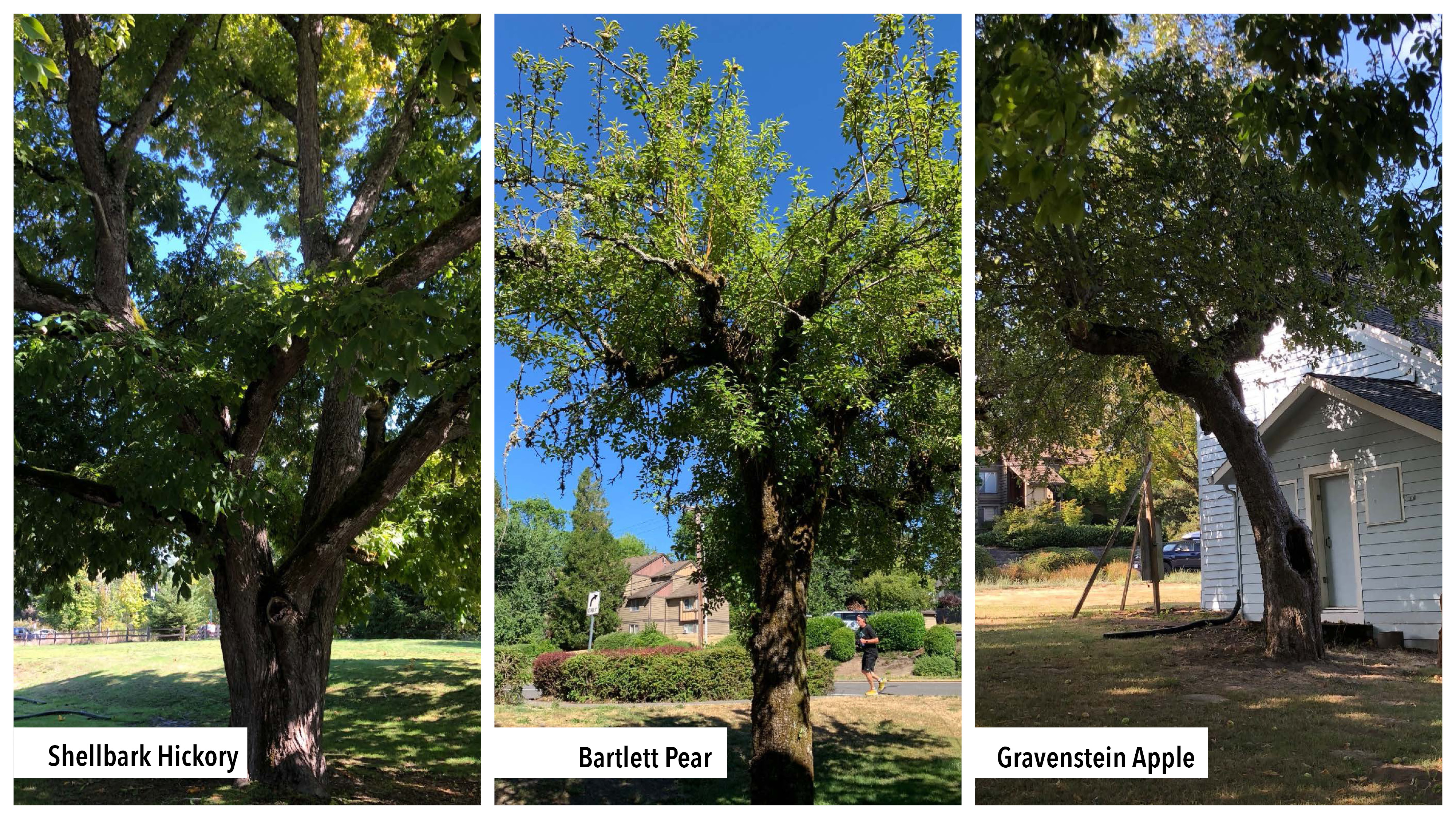Cedar Mill Cider Festival Features Oregon Heritage Tree Dedication (Photo) - 09/03/25
(Cedar Mill, Oregon) The Travel Information Council and its volunteer Oregon Heritage Tree Committee, along with Tualatin Hills Park & Recreation District and Treekeepers of Washington County, invite the public to participate in the induction of the JQA Young House Fruit Trees into the Oregon Heritage Tree Program. The event will take place on Sunday, September 21 at 2:15 p.m. at the John Quincy Adams (JQA) Young House during the annual Cedar Mill Cider Festival: 12050 NW Cornell Rd, Portland, Oregon, 97229.
Three fruit trees- a Shellbark Hickory, a Bartlett Pear, and a Gravenstein Apple- are landscape features of the historic Young House and estimated to be around 150 years old. These trees represent an example of early home management and food production, typical of an early farm or residential property of the period. Collectively, they are Oregon’s 85th Heritage Tree Designation.
Speakers at the event include Friends of the JQA Young House and the chair of the Oregon Heritage Tree Committee.
Built between 1863 and 1869, the Young House is listed in the National Register of Historic Places for its association with the early growth and community development of Cedar Mill in Washington County. The house served as the residence of the Young family from 1869-1874 and then as the first post office and a community store from 1874-1881. It is the oldest remaining historic resource in Cedar Mill.
Treekeepers of Washington County prepared the nomination for the heritage trees. Their mission to protect and advocate for trees in Washington County underscores the importance of raising awareness about exceptional trees, stating that "bringing special trees to the attention of others is a key aspect of our goals." This approach not only enhances community appreciation for trees but also fosters a stronger commitment to their preservation.
Oregon Heritage Tree Committee Chair Dave Hedberg encourages the public to visit the JQA Young House Trees: “Visiting an Oregon Heritage Tree is a chance to engage your senses and learn about local history in the real world – not just in books and on screens. It’s a way to honor the role trees play in our lives and Oregon’s history. When you visit the Young House, consider the proximity and relationship of the trees to the house. There are few remaining structures over 150 years old where you can see a house still standing next to the original fruit trees.”
Keith Watson, support services manager with Tualatin Hills Park & Recreation District (THPRD) adds, “The JQA Young House is the last remaining above-ground resource associated with the cedar mill for which the community was named. THPRD is pleased that the remaining fruit trees are part of the state Heritage Tree Program.”
Sponsored by THPRD, the Cedar Mill Cider Festival runs from noon-4 p.m. and includes free fresh-pressed cider, live music, history, vendors, hot food, and kids’ activities on the grounds of the John Quincy Adams Young House. Michael Panhorst with the Friends of the Young House says, “The Cider Festival is a community event that brings history, entertainment, and family fun together. We invite everyone to join in the 17th year of the festival and a chance to view these trees.”
The Oregon Heritage Tree Program is the first state-sponsored heritage tree program in the country. It was established in 1995 to increase public awareness of the important contribution of trees to Oregon’s history and the significant role they play in the quality of our daily life. The program is administered by the Oregon Travel Information Council and a committee of dedicated volunteers from across the state. For more information regarding the Heritage Tree program visit www.oregontic.com/oregon-heritage-trees.

